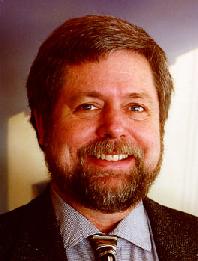






Gannon received his B.S., M.S., and Ph.D. in mathematics at the University of California at Davis (1969, 1971, and 1974), and a Ph.D. in computer science from the University of Illinois (1980). He began his career as an assistant professor at Purdue University and was promoted to associate professor before joining the faculty at Indiana University in 1985 as a professor of computer science. In 1990, Gannon was the founding research director of the Center for Innovative Computer Applications (CICA), a special projects unit of Indiana University that explores applications of new computing technologies. He served in that position until 1995, and is currently director of infrastructure for the computer science department and director of the Extreme Computing Lab at the university.
Gannon is primarily interested in the process of programming parallel computers and program visualization. An affiliated CRPC site since March 1995, Gannon's Indiana group is currently working on the management of the Advanced Research Projects Agency (ARPA) HPC++ project. "HPC++ has evolved out of a number of projects under CRPC sponsorship," Gannon says, "including the Caltech CC++ project, the Los Alamos A++ and POOMA libraries, and the pC++ data parallel language developed at Indiana and the University of Oregon."
The pC++ language has also been a key component of the National Science Foundation Grand Challenge Computational Cosmology Consortium, of which Gannon is a member. The group is using pC++, HPF, and MPI to build parallel software to simulate the evolution of the universe. This collaboration was awarded the prize for the "Best Integration of Heterogeneous Applications" at the SUPERCOMPUTING '95 High-Performance Computing Challenge for "Galaxies Collide on the I-WAY" ( "CRPC Awards and Honors", and "Research Focus").
Gannon is involved with the design of the Sage++ compiler infrastructure toolkit, which provides a simple object-oriented interface to program source code for use in preprocessors and programming tools. It is used in various CRPC projects at Argonne, Caltech, and Los Alamos. Other CRPC collaborations include the Parallel Compiler Runtime Consortium, the PORTS runtime group, and the new Problem Solving Environment (PSE) project led by K. Mani Chandy at Caltech (see "Work in Progress").
Gannon has served as editor for several journals, including the Journal of Supercomputer Applications and the Journal of Highspeed Computation, and the MIT Press series on high-performance computing. He is the author or co-author of more than 50 papers and has co-edited two books about parallel algorithms and architectures.
"The computer science problems I find most interesting are those that involve multidisciplinary collaborations," says Gannon. "The CRPC brings together a remarkable collection of computational and computer scientists to work on using parallel and distributed systems to solve real-world problems."